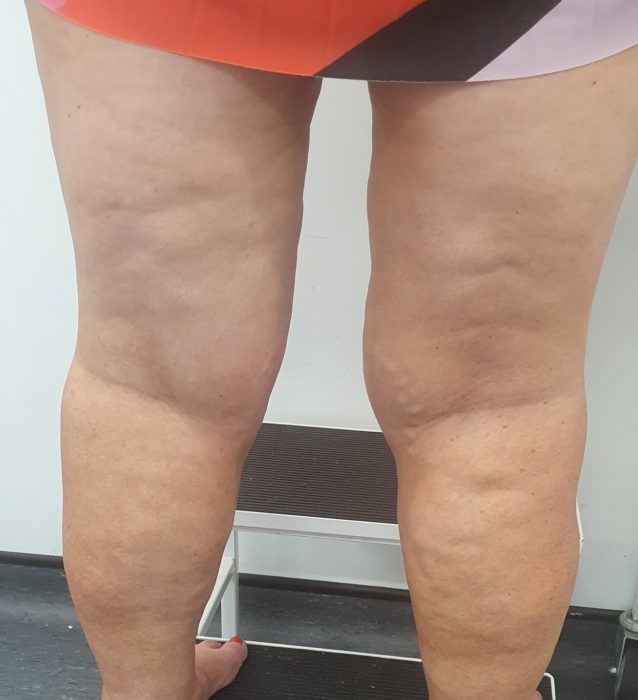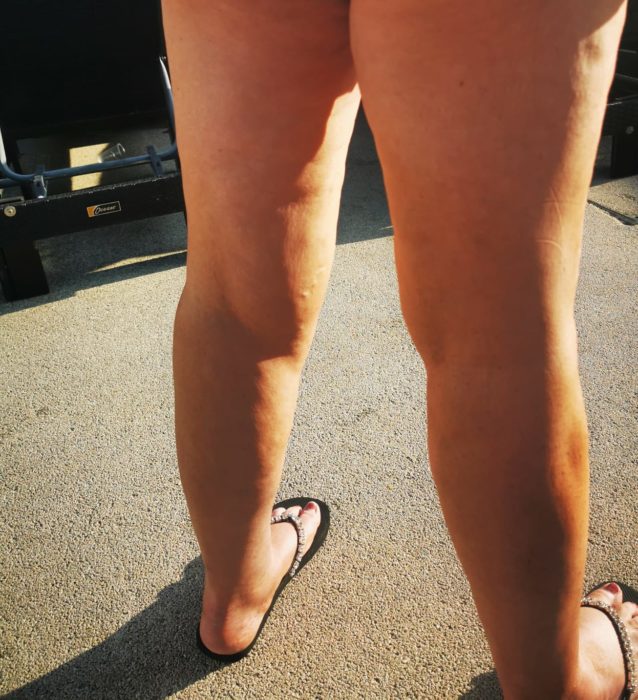“Varicose veins are something I’ve had since my teen years but not bulging out the way they are now,” Siobhan says. “It’s something I’ve kept very private as it’s such an insecurity.” For many people, feeling embarrassed about the way their legs look is a very real issue. In Siobhan’s case, she only wore long skirts and dresses to disguise her legs, and stopped dating because she felt so self-conscious about her veins.
Aside from being unhappy about the way her veins looked, Siobhan also experienced unwelcome physical symptoms such as tiredness, aching, discomfort, and pain from her varicose veins.. “The veins are very painful, especially when I’m on my cycle,” she explains. “They ache, which can wake me up multiple times a night. I even tried to wear compression stockings to relieve the pain but these were of little benefit as I was not able to wear them for any length of time.”
Siobhan’s experience is not unusual. Dr Ananth Krishnan is Consultant Interventional Radiologist at Veincentre. He explains: “varicose veins can be unsightly and, in many patients, go on to cause a range of symptoms including pain, throbbing, itching and also restless legs and cramps. Eventually this back-pressure on the skin can cause darkening and thickening of the skin and can predispose to leg ulcers later in life”.
Varicose vein surgery is becoming less and less available on the NHS, even for a patient like Siobhan who struggled with pain caused by her condition. Instead, many patients choose treatment at private clinics like Veincentre.
What are varicose veins?
Put simply, they are dilated surface veins in the legs. The veins in the legs have two systems that drain blood back to the heart, deep veins and superficial veins. The veins are under low-pressure and rely on the muscles in the legs pumping the blood into the veins. The veins then rely on valves to stop the blood going back on itself with gravity when standing up. These valves in the superficial veins commonly stop working (become leaky – also called reflux) in up to one-third of us at some point in our lives. This backflow of blood down the legs when standing up can then over time grow normal veins into large bulgy veins called varicose veins, and can often be the cause of thread or spider veins.
How are varicose veins treated at Veincentre?
Dr Krishnan explains. “Historically treatment would have been a surgical operation to remove (strip) the trunk vein, although this has now been replaced by methods to close the vein where it lies called endovenous (within the vein) procedure.”
Now, the National Institute of Health and Care Excellence (NICE) recommends that all patients should have minimally invasive treatment and not surgery. “Many patients are still told by surgeons that surgery is the only answer,” says Dr Krishnan. “Yet it should never be necessary. We have been treating patients without surgery for over seventeen years. There is no need for general anaesthetic.”
A relative of Siobhan’s underwent this surgery many years back, and witnessing her recovery is one of the reasons Siobhan has held off seeking treatment for herself. “She was off work for about six weeks and couldn’t drive – they literally went in and ripped the veins out, which really put me off. I then came across Veincentre and learnt more about modern varicose veins treatments. After doing a lot of research I rang their patient advisory team who were very informative and were able to tell me all about their treatments and answer my questions which resulted me booking a consultation and then treatment with them.”
For Siobhan, who began her consultation with Veincentre in May 2021, it was found that she had varicose veins on both of her legs. Dr Krishnan determined that she needed Bilateral Endovenous Laser Ablation to treat the underlying cause first, and then Foam Sclerotherapy to treat the visible veins.
How did she find the treatment?
“Everyone at Veincentre was so lovely, the team at the clinic explained everything thoroughly and put me at ease whenever I needed it. My varicose vein treatment journey took around 2 months. I found the procedure uncomfortable rather than painful and had to wear stockings for a week afterwards but didn’t experience any significant discomfort. Most importantly, all the symptoms that I suffered with are gone and my legs look great again!
I was really looking forward to a life without pain and to increase my body confidence by having this treatment and I am so happy this has been achieved. I can’t wait to start dating again and get my legs out on holiday. We’ve gone through the pandemic, and it makes you look at things and realise life is too short not to be happy with yourself!”


